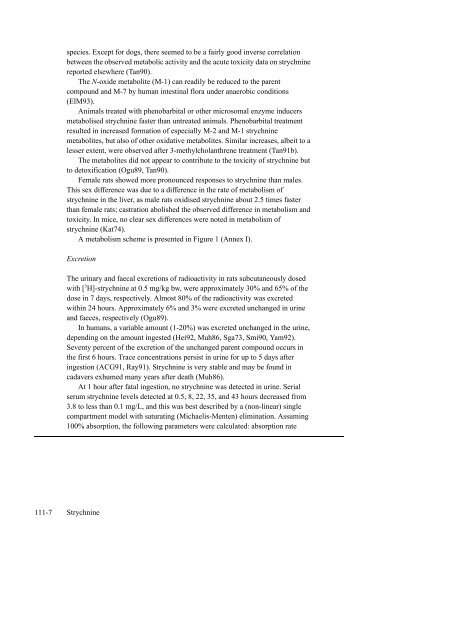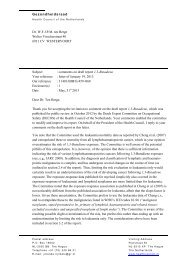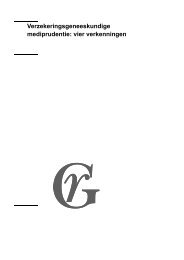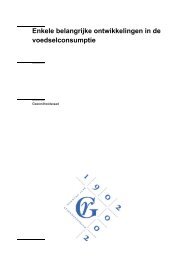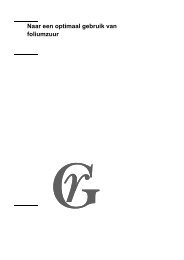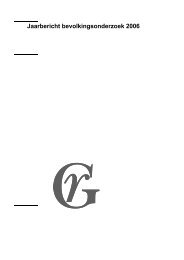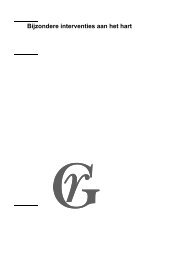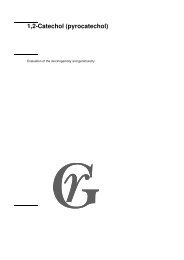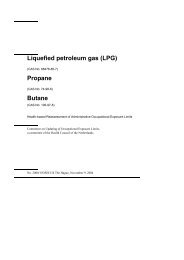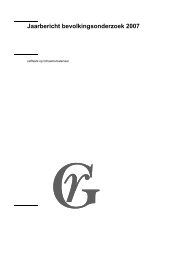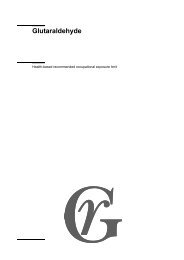Strychnine - Gezondheidsraad
Strychnine - Gezondheidsraad
Strychnine - Gezondheidsraad
Create successful ePaper yourself
Turn your PDF publications into a flip-book with our unique Google optimized e-Paper software.
species. Except for dogs, there seemed to be a fairly good inverse correlation<br />
between the observed metabolic activity and the acute toxicity data on strychnine<br />
reported elsewhere (Tan90).<br />
The N-oxide metabolite (M-1) can readily be reduced to the parent<br />
compound and M-7 by human intestinal flora under anaerobic conditions<br />
(ElM93).<br />
Animals treated with phenobarbital or other microsomal enzyme inducers<br />
metabolised strychnine faster than untreated animals. Phenobarbital treatment<br />
resulted in increased formation of especially M-2 and M-1 strychnine<br />
metabolites, but also of other oxidative metabolites. Similar increases, albeit to a<br />
lesser extent, were observed after 3-methylcholanthrene treatment (Tan91b).<br />
The metabolites did not appear to contribute to the toxicity of strychnine but<br />
to detoxification (Ogu89, Tan90).<br />
Female rats showed more pronounced responses to strychnine than males.<br />
This sex difference was due to a difference in the rate of metabolism of<br />
strychnine in the liver, as male rats oxidised strychnine about 2.5 times faster<br />
than female rats; castration abolished the observed difference in metabolism and<br />
toxicity. In mice, no clear sex differences were noted in metabolism of<br />
strychnine (Kat74).<br />
A metabolism scheme is presented in Figure 1 (Annex I).<br />
Excretion<br />
The urinary and faecal excretions of radioactivity in rats subcutaneously dosed<br />
with [ 3 H]-strychnine at 0.5 mg/kg bw, were approximately 30% and 65% of the<br />
dose in 7 days, respectively. Almost 80% of the radioactivity was excreted<br />
within 24 hours. Approximately 6% and 3% were excreted unchanged in urine<br />
and faeces, respectively (Ogu89).<br />
In humans, a variable amount (1-20%) was excreted unchanged in the urine,<br />
depending on the amount ingested (Hei92, Muh86, Sga73, Smi90, Yam92).<br />
Seventy percent of the excretion of the unchanged parent compound occurs in<br />
the first 6 hours. Trace concentrations persist in urine for up to 5 days after<br />
ingestion (ACG91, Ray91). <strong>Strychnine</strong> is very stable and may be found in<br />
cadavers exhumed many years after death (Muh86).<br />
At 1 hour after fatal ingestion, no strychnine was detected in urine. Serial<br />
serum strychnine levels detected at 0.5, 8, 22, 35, and 43 hours decreased from<br />
3.8 to less than 0.1 mg/L, and this was best described by a (non-linear) single<br />
compartment model with saturating (Michaelis-Menten) elimination. Assuming<br />
100% absorption, the following parameters were calculated: absorption rate<br />
111-7 <strong>Strychnine</strong>


